Candi Gunung Kawi Temple Complex: Bali’s Valley of Kings
Deep within the verdant heart of Bali, Candi Gunung Kawi stands as one of the island’s most impressive ancient landmarks. Known as the "Valley of Kings," this sacred temple complex is carved into the sheer rock cliffs of the Pakerisan River and is thought to date back to the 11th century. It offers visitors a journey through Bali’s spiritual and royal heritage, where nature and history converge in one of the most serene settings imaginable.

The main attractions of the temple complex are the 10 shrines, known as "candi," carved into the cliffs to honor Balinese royalty. These monuments are said to be dedicated to King Anak Wungsu of the Udayana dynasty and his family, making this site a significant spiritual and historical landmark. As you explore the area, the tranquility of the surrounding rice terraces and dense jungle immerses you in an atmosphere of timeless reverence.
Located in Tampaksiring, the Candi Gunung Kawi complex is more than just a historical site; it is a spiritual pilgrimage destination. The temple’s proximity to other sacred locations, such as Tirta Empul and its holy waters, adds to its religious significance, drawing devotees and visitors alike who seek to experience Bali’s rich cultural and spiritual legacy.
Candi Gunung Kawi is a must-visit for any traveler seeking to delve into Bali’s royal past and spiritual traditions. Surrounded by natural beauty and steeped in ancient history, it offers a unique perspective on the island’s enduring cultural heritage.
Table of Contents
Entrance Fees
As of this guide's update in September 2024, the entrance fees for Gunung Kawi Temple are IDR 50,000 (approximately USD $3.57) for adults and IDR 30,000 (approximately USD $2.14) for children aged 3 to 12 years for international visitors. This fee allows you to explore the ancient temple complex, admire the stunning stone carvings, and enjoy the peaceful surroundings of the lush valley. It's a remarkable opportunity to delve into Bali’s rich spiritual and historical heritage.
We kindly recommend bringing cash, as card payments are not accepted at the temple. Be sure to have enough cash for the entrance fee as well as any additional expenses such as drinks, snacks, or souvenirs. Children under 3 years usually enter free of charge.
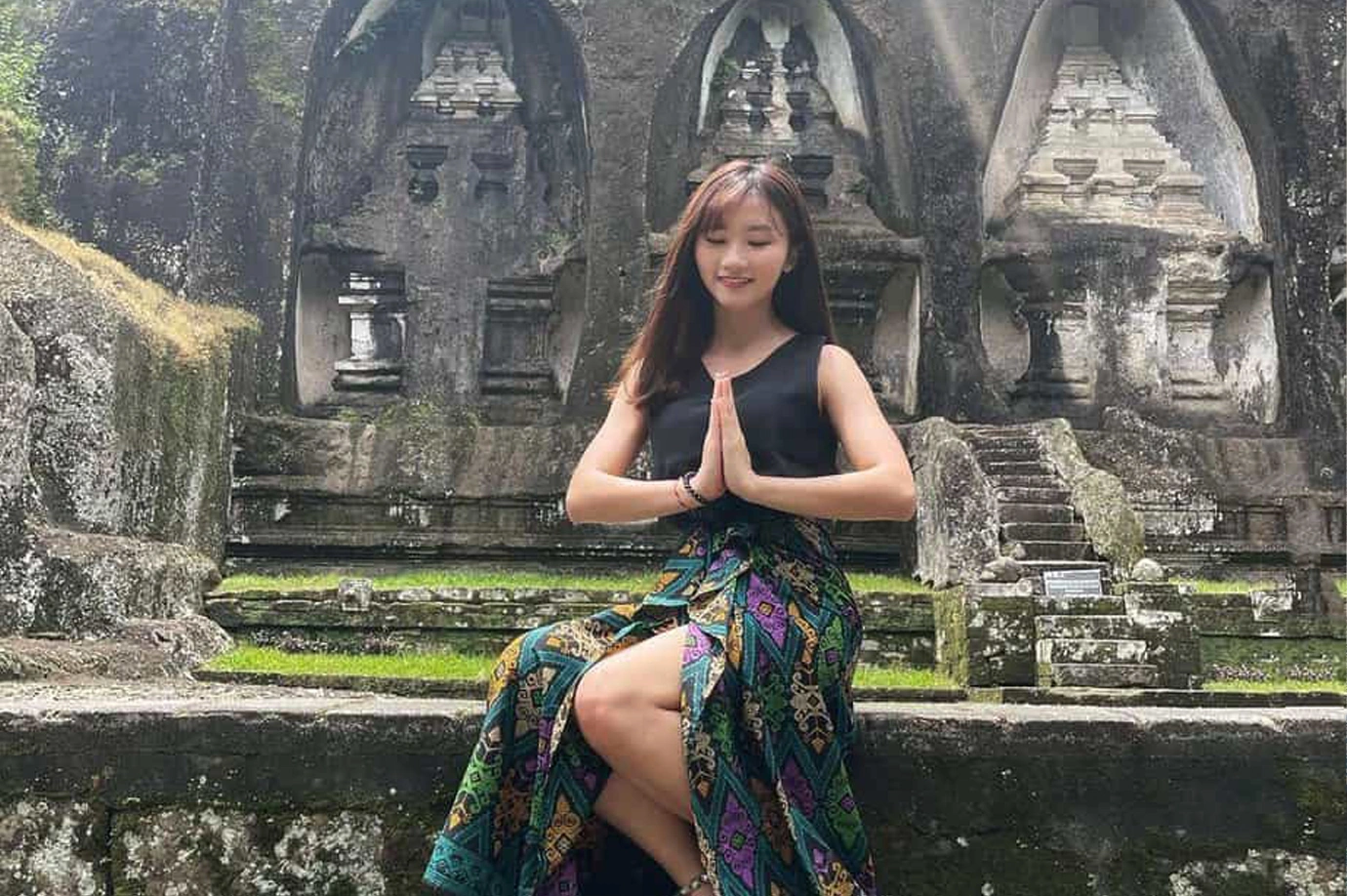
Address & Accessibility
Welcome to Gunung Kawi Temple Complex, an ancient royal site located in Tampaksiring, Bali. You can find it at: Gunung Kawi, Jalan Raya Tampaksiring, Tampaksiring, Bali, Indonesia.
The temple is easily accessible by road. Whether you are traveling by car or scooter, the journey through Bali’s scenic landscapes is pleasant and straightforward. From Ubud, the trip takes around 30 minutes, and from Denpasar, it’s approximately a 1-hour drive. As the temple complex includes steps and uneven terrain, we recommend wearing comfortable shoes to fully enjoy your exploration of this historically rich and spiritually significant site.
How to Get to Gunung Kawi Temple?
Reaching Gunung Kawi Temple is relatively easy, and there are several transportation options based on your location and preference:
By Car: The most comfortable and convenient way to reach Gunung Kawi is by car. If you're staying in popular areas like Ubud, Seminyak, or Kuta, you can rent a car and enjoy the scenic drive. The roads are well-maintained, and you’ll pass through some of Bali’s beautiful countryside. Parking is available near the temple.
By Taxi: You can also take a taxi or use ride-hailing apps such as Grab or Gojek to get to Gunung Kawi. This is a great option for those who prefer not to drive. However, fares can vary depending on your starting location, and it may be more expensive than renting a car, especially for longer distances.
By Scooter: For the more adventurous traveler, renting a scooter is a budget-friendly and flexible option. This allows you to explore at your own pace and enjoy the scenic routes to Gunung Kawi Temple. Just be sure to wear safety gear and drive cautiously, as Bali's roads can be challenging for those unfamiliar with local driving conditions.
Recommendations: For a more seamless experience, consider joining a guided tour to Gunung Kawi Temple. Many local operators offer packages that include transportation, a guide, and visits to nearby attractions. Here are two popular options to consider:

Ubud Instagram Tour: Bali's Most Scenic Spots
★ ★ ★ ★ ★ (745 Reviews)
Explore Bali's most scenic spots on the Ubud Instagram Tour. Capture breathtaking moments at Ubud Monkey Forest, Saraswati Temple, Tegalalang Rice Terraces, Happy Swing Ubud, and Bali Pulina Coffee Plantations. Enjoy a mix of cultural immersion and social media magic with expert guides, flexible payment options, and an unforgettable experience designed for perfect photos and memories. See Details
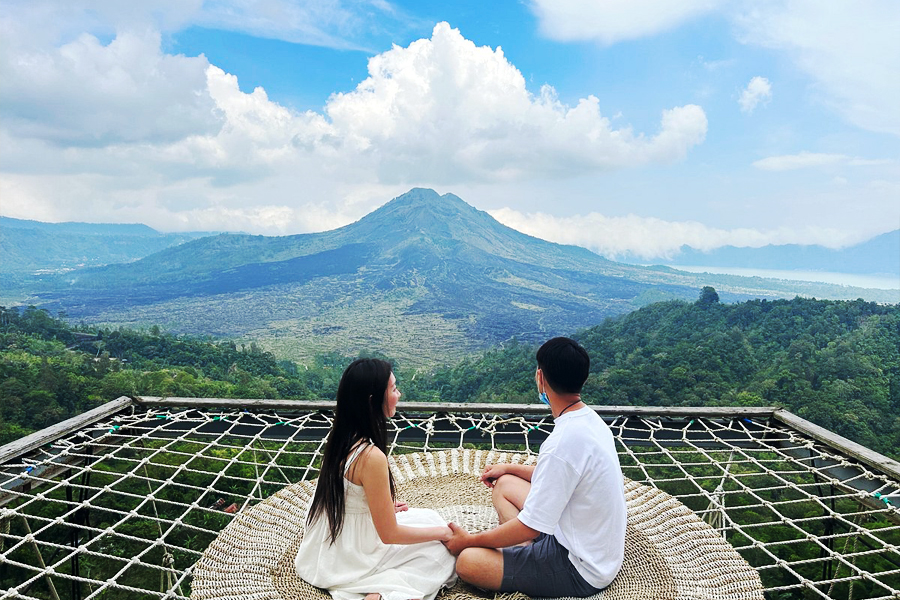
Private Day Trip: Kintamani Volcano, Waterfall, and Ubud
★ ★ ★ ★ ★ (757 Reviews)
Gear up for an adventure-packed day! From the breathtaking Tegallalang Rice Terraces to the majestic Kintamani Volcano, this tour has it all. You'll also visit the stunning Tegenungan Waterfall and get lost in the art and culture of Ubud, Bali’s cultural heart. Don’t miss this epic experience that offers a perfect mix of nature, history, and vibrant local life! See Details
Opening Hours
Gunung Kawi Temple is open to visitors from 7:00 AM to 6:00 PM daily. These hours allow ample time to explore the ancient shrines, admire the stunning carvings, and soak in the tranquil surroundings. For a more serene experience, visiting early in the morning or later in the afternoon is recommended to avoid peak tourist hours.
The temple remains accessible for prayer and religious activities 24 hours a day, providing devotees with a sacred space for spiritual practices. During Balinese Hindu festivals and ceremonies, parts of the temple may be reserved for worship, and visitors are encouraged to be respectful of these rituals.
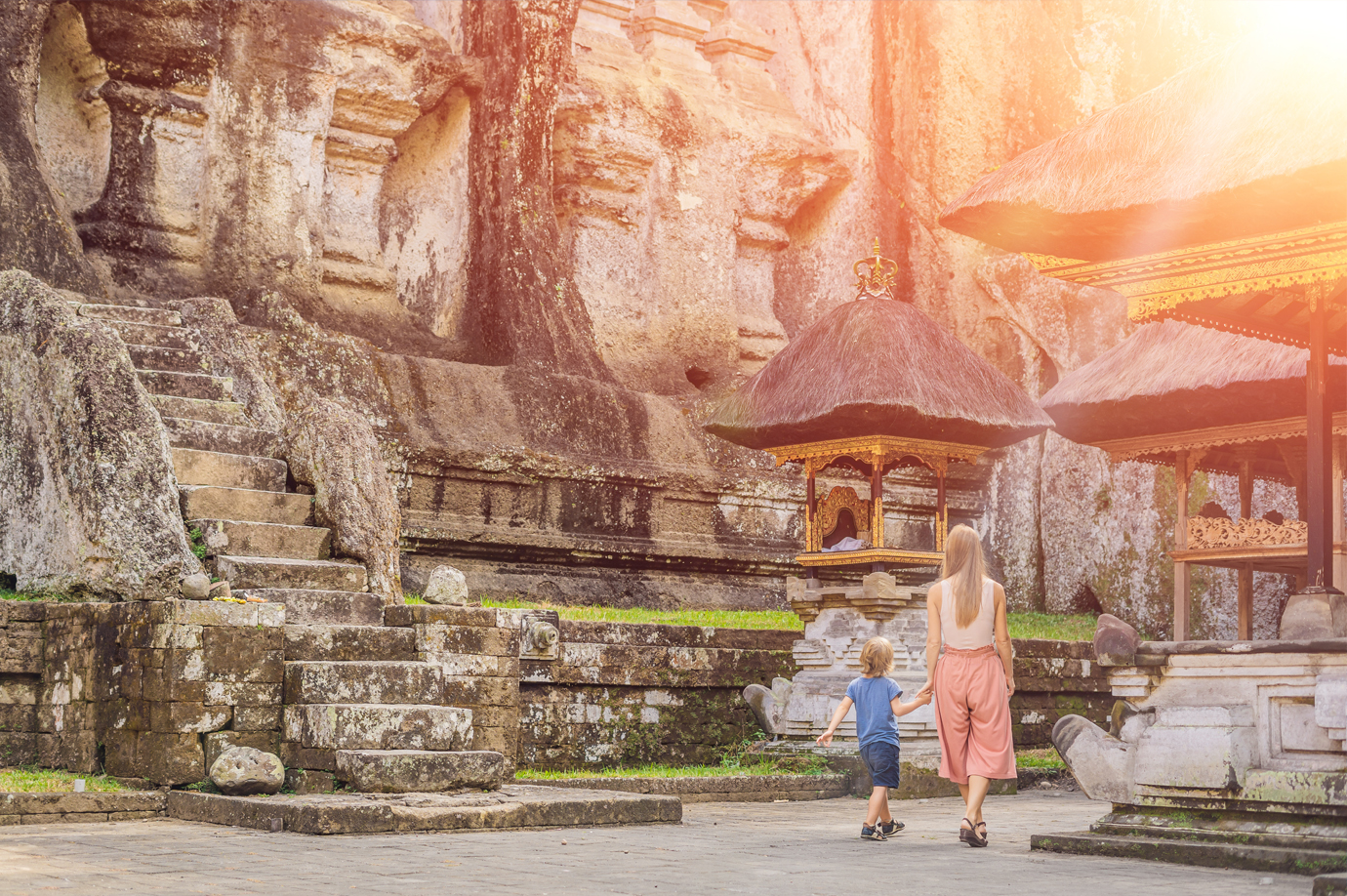
Best Time to Visit
The best time to visit Gunung Kawi Temple is during Bali's dry season, which runs from April to October. The weather during these months is generally pleasant, with lower humidity and minimal rainfall, making it ideal for exploring the temple complex and enjoying the surrounding lush rice terraces and scenic valley.
For a peaceful and uncrowded experience, it’s recommended to visit early in the morning, between 7:00 AM and 9:00 AM. At this time, the temple grounds are quieter, and the morning light enhances the beauty of the ancient carvings and natural surroundings. Alternatively, visiting in the late afternoon allows you to avoid the midday heat and larger tour groups.
Additionally, if you're interested in witnessing local cultural practices, visiting during a Balinese religious festival offers a unique opportunity to experience the temple's spiritual significance in full display. However, please note that parts of the temple may be restricted to worshippers during these times.
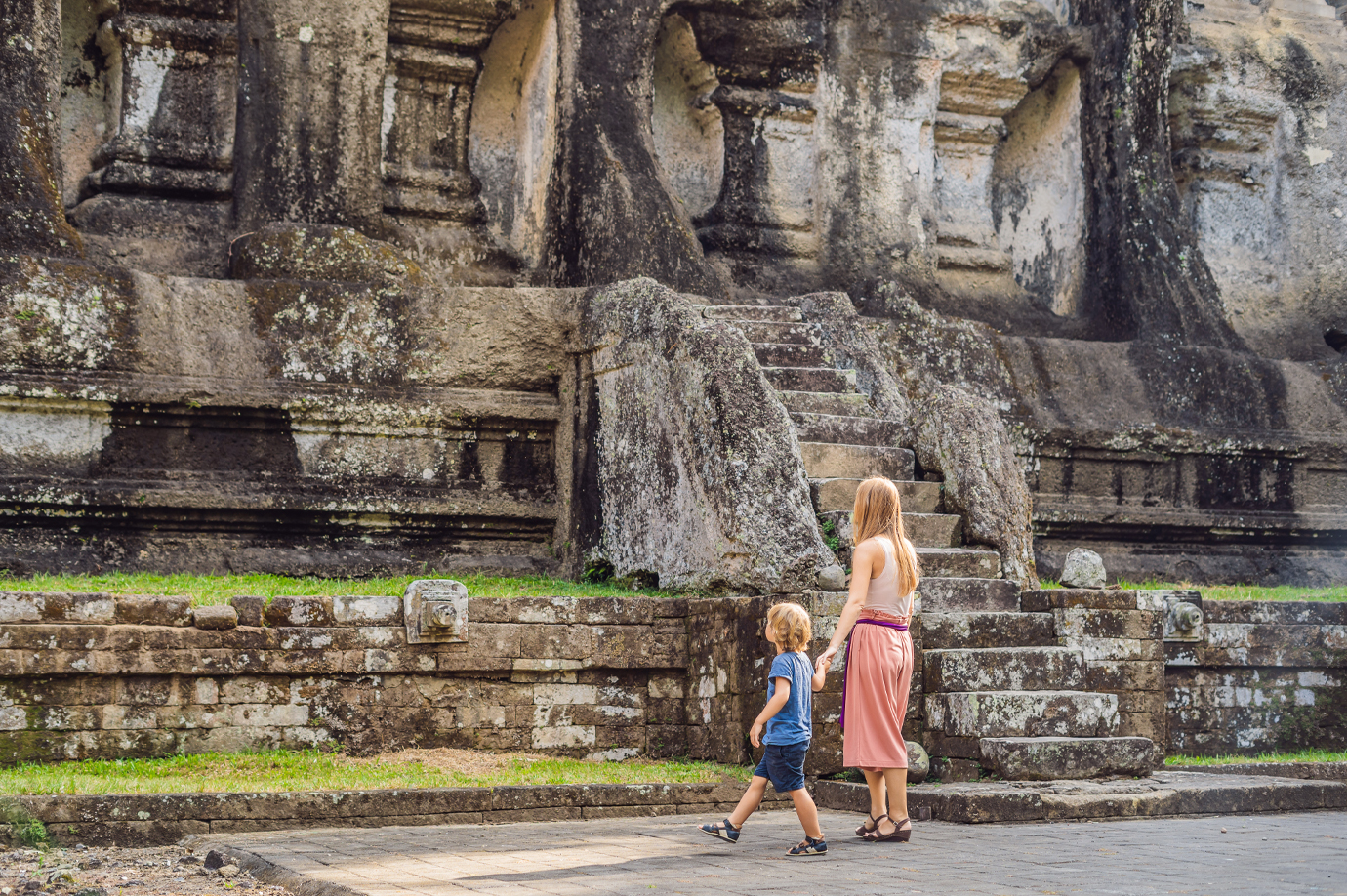
What to See & Do
Gunung Kawi Temple offers visitors a blend of historical, cultural, and natural experiences. Here’s a guide to the highlights you can enjoy during your visit:
- Explore the Ancient Rock Shrines: Admire the 10 towering rock-cut shrines, known as “candi,” which are carved into the cliffs. These stunning monuments honor Balinese royalty and provide a fascinating glimpse into Bali’s ancient history.
- Walk Through Scenic Rice Terraces: Take a peaceful stroll through the beautiful rice terraces that surround the temple complex. These lush fields offer a serene and picturesque environment, perfect for nature lovers.
- Connect with Balinese Spirituality: As a sacred site, Gunung Kawi provides a unique opportunity to learn about Bali’s spiritual traditions. Observe local worshippers and ceremonies to gain a deeper understanding of the island’s religious culture.
- Visit the Holy Spring of Pakerisan River: The nearby Pakerisan River, which flows through the temple, is considered holy by the Balinese. You can observe the river’s significance in local rituals and enjoy its calming presence as you explore the area.
- Learn About Balinese History: Gunung Kawi is an archaeological treasure. You can learn about the history of Bali’s royal families and the significance of the temple in Balinese culture through local guides or informational plaques.
- Capture Stunning Photos: The ancient shrines, natural surroundings, and unique atmosphere of Gunung Kawi make it an excellent spot for photography. Early morning or late afternoon light provides the best conditions for capturing the beauty of this sacred place.
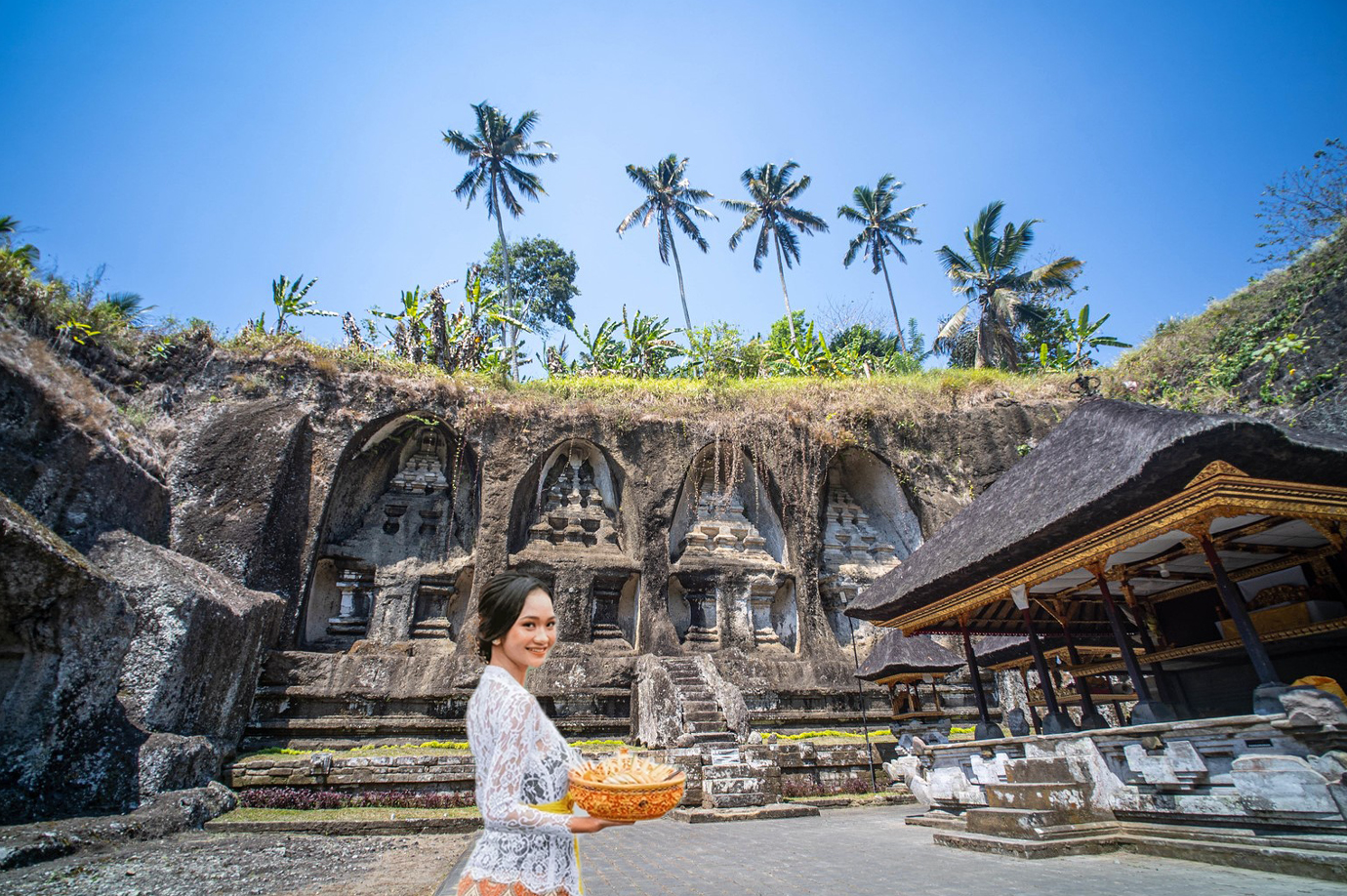
History of Gunung Kawi Temple
The history of Gunung Kawi Temple is deeply intertwined with Bali’s ancient royal and spiritual past. Built in the 11th century during the reign of the Udayana dynasty, the temple complex is dedicated to King Anak Wungsu and his royal family. The impressive shrines, or "candi," are believed to serve as memorials to the king and his relatives, carved directly into the towering rock cliffs along the Pakerisan River.
According to local legend, the temple was created by the giant Kebo Iwa, who carved the shrines in a single night. While this legend adds a mythical dimension to the site, Gunung Kawi's true significance lies in its connection to Bali's royal heritage and ancient Balinese Hinduism.
The temple is also considered a sacred site in Balinese spirituality. The location of Gunung Kawi, surrounded by lush rice terraces and the holy waters of the Pakerisan River, enhances its spiritual importance. It is a place of pilgrimage for those seeking to honor ancestors and connect with the island's ancient religious traditions.
Throughout the centuries, Gunung Kawi has remained a place of spiritual reverence and historical importance. Visitors today can still sense the powerful energy of the temple, walking through the peaceful valley and admiring the ancient stone carvings that have stood the test of time.
Gunung Kawi Temple remains a major cultural and historical attraction in Bali, offering a unique glimpse into the island’s royal past and its enduring spiritual practices.
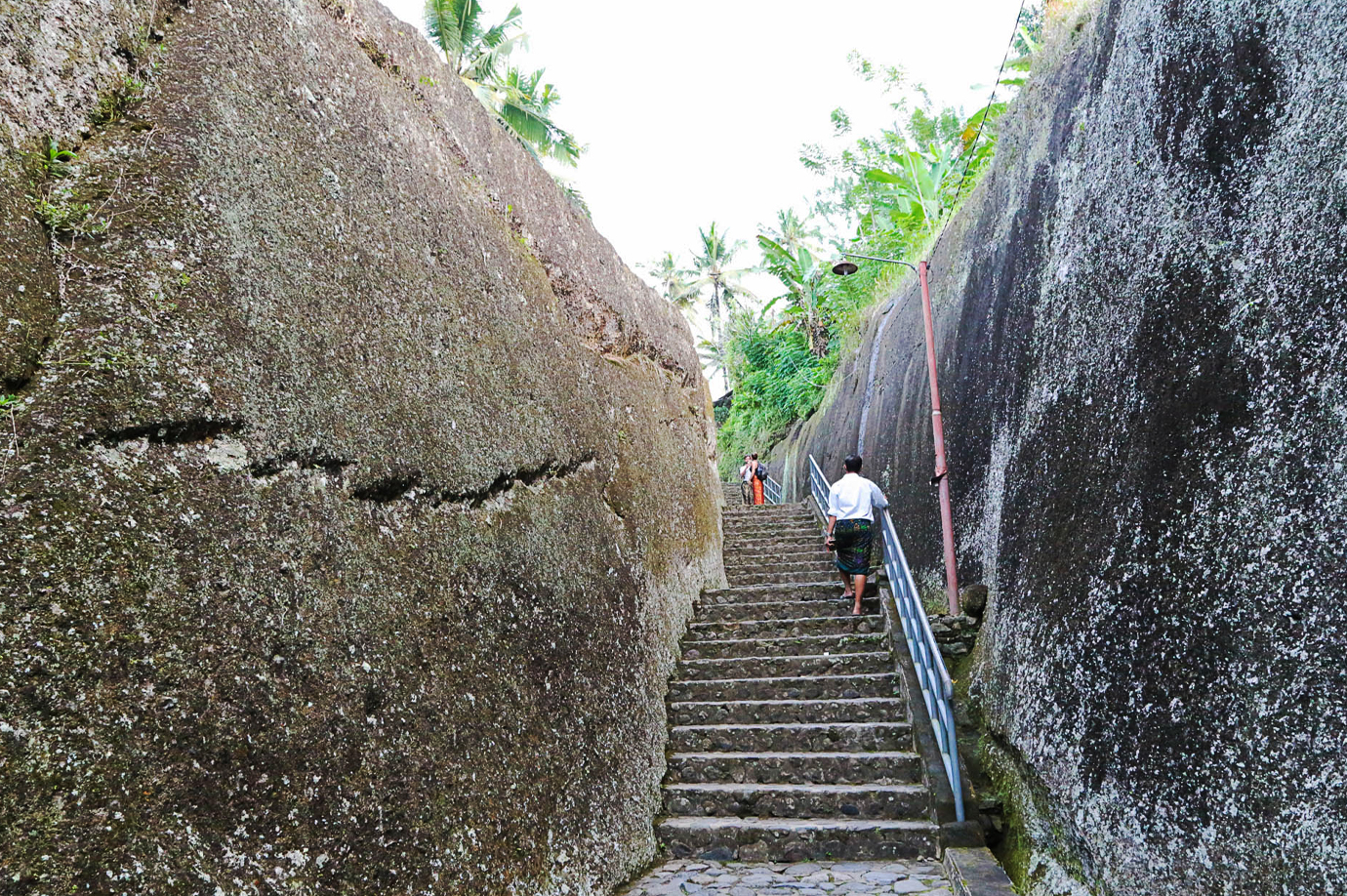
Architecture and Layout
When you arrive at Gunung Kawi Temple, you’re greeted by an awe-inspiring blend of natural and man-made structures. The temple complex’s architecture is a striking example of Bali’s ancient rock-cut style, with large shrines carved directly into the cliffs. The layout of Gunung Kawi is influenced by the sacred Balinese concept of harmony between humans, nature, and the divine, blending religious elements with the surrounding landscape.
- Nista Mandala (Outer Area): This outer section, accessible after descending a flight of steps surrounded by lush rice terraces, serves as an introduction to the sacred site. You pass through a stone entrance that marks the beginning of the temple grounds.
- Madya Mandala (Middle Area): In the middle area, you will find the impressive stone-carved shrines, or “candi,” that were built to honor the Balinese royal family. These 10 towering shrines are the central architectural highlight of the temple complex, carved into the cliffside and surrounded by natural beauty.
- Utama Mandala (Inner Sanctuary): The inner sanctuary is the most sacred part of the temple. This area is reserved for rituals and spiritual activities, with ancient stone reliefs and shrines that emphasize the temple’s spiritual significance. Here, you can feel a deep connection to Bali’s royal past and religious traditions.
Gunung Kawi Temple’s architecture is a testament to the skill of ancient Balinese craftsmen. The blend of sacred structures with the natural landscape creates a unique and serene atmosphere, where the architecture seems to emerge naturally from the cliffs themselves.

Mythology & Legends
Gunung Kawi Temple is not only an architectural wonder but also a site deeply rooted in Balinese mythology and legends. Situated in the lush valley of the Pakerisan River, this ancient temple is imbued with spiritual significance that dates back to the 11th century, during the reign of the Udayana dynasty.
One of the most prominent legends associated with Gunung Kawi involves the creation of the rock-cut shrines. According to local lore, the giant Kebo Iwa carved the massive shrines in a single night using just his fingernails. This legend adds a mythical dimension to the site, symbolizing the extraordinary strength and devotion of the Balinese people toward their gods and ancestors.
The temple is also said to be a sacred place for honoring King Anak Wungsu and his family, who ruled Bali during the ancient Udayana dynasty. The royal shrines at Gunung Kawi are believed to hold the spiritual essence of the king and his ancestors, making the temple a key site for ancestral worship and pilgrimage.
Another fascinating belief tied to Gunung Kawi is the spiritual power of the Pakerisan River, which flows through the temple grounds. The river is considered holy, and it is thought that its waters are blessed by the gods. Balinese Hindus often come to the river to cleanse themselves and participate in rituals that connect them to the divine energy of the temple.
Visitors to Gunung Kawi Temple can experience the deep connection between mythology and the physical landscape. The temple’s serene atmosphere, combined with its rich history and legends, provides a unique window into the spiritual heritage of Bali, where myths and sacred traditions continue to thrive.
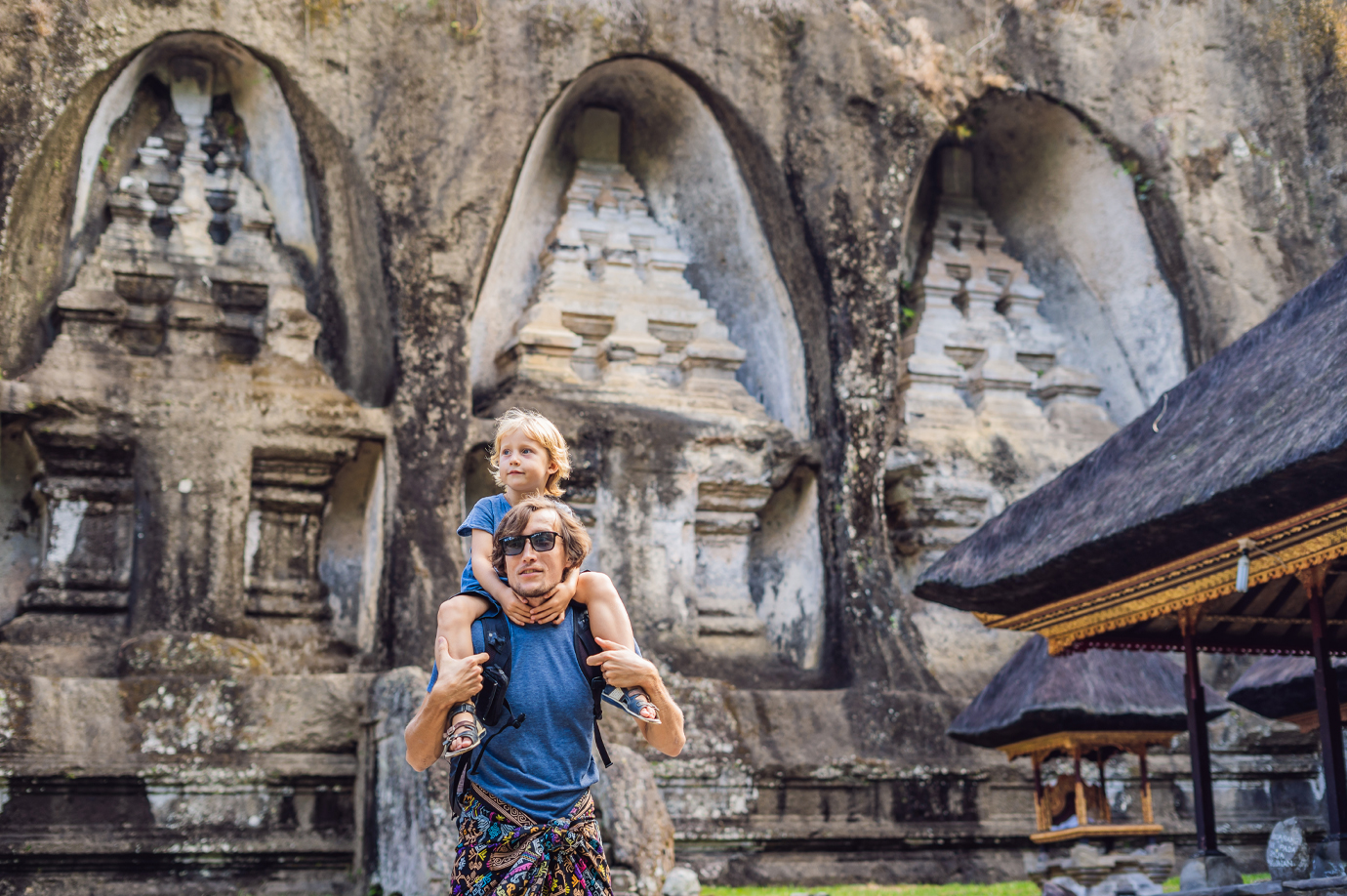
Nearby Best Restaurants
After exploring the spiritual and historical beauty of Gunung Kawi Temple, you'll want to enjoy a satisfying meal. The surrounding area offers a variety of dining options, from authentic Balinese dishes to international flavors. Here are some recommended restaurants to tantalize your taste buds:
- Bebek Tepi Sawah: Located near scenic rice fields, this restaurant offers a peaceful atmosphere and authentic Balinese cuisine. Their signature crispy duck is a must-try, known for its flavorful and crispy perfection.
- Warung Pulau Kelapa: This charming restaurant in Ubud offers traditional Indonesian dishes in a garden setting. Their extensive menu features delicious local favorites, made from fresh ingredients and bursting with authentic flavors.
- Locavore: For a fine dining experience, Locavore is a top choice in Ubud. This restaurant focuses on sustainable, locally sourced ingredients, presenting creative dishes that combine modern culinary techniques with Indonesian flavors.
- Bridges Bali: Overlooking the lush Tjampuhan River Valley, this elegant restaurant provides a romantic setting and a diverse menu inspired by global cuisine. The beautiful presentation and rich flavors make it a perfect dining experience.
- Sari Organik: For health-conscious travelers, Sari Organik offers farm-to-table dining with organic, locally grown ingredients. Nestled in the rice paddies, it’s the ideal spot for a fresh and wholesome meal after a day of exploration.
Whether you're craving traditional Balinese dishes or looking for a fine dining experience, there are plenty of delicious options near Gunung Kawi Temple. Take your time to explore the local food scene and savor the rich culinary heritage of Bali.

Nearby Best Hotels
After exploring the wonders of Gunung Kawi Temple, extend your stay at one of the nearby accommodations. Here are some handpicked hotels offering a combination of modern comfort and traditional Balinese charm:
- Mandapa, a Ritz-Carlton Reserve: This riverside sanctuary offers luxurious villas, top-notch service, and a peaceful ambiance. Guests can enjoy rejuvenating spa treatments, yoga sessions, and fine dining, all surrounded by Bali’s stunning natural beauty.
- Hanging Gardens of Bali: Famous for its iconic infinity pool overlooking the jungle, this resort offers ultimate privacy and serenity. With luxurious villas, a world-class spa, and fine dining, it’s the perfect escape for relaxation and indulgence.
- The Ubud Village Resort & Spa: Located in serene gardens, this resort offers private Balinese-style villas, a peaceful spa, and a swimming pool. It’s an ideal retreat for those seeking tranquility and comfort amidst traditional Balinese hospitality.
These hotels offer a variety of experiences, from luxurious indulgence to eco-friendly stays, making them perfect bases for exploring Gunung Kawi Temple and its surroundings.
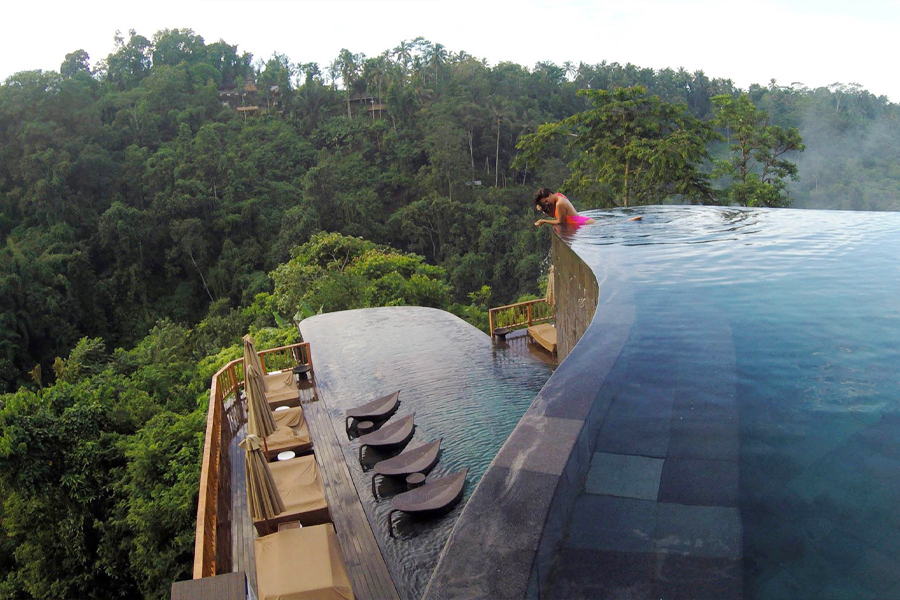
Nearby Attractions
While Gunung Kawi Temple is a fascinating destination on its own, the surrounding area offers several other must-see attractions that can further enhance your Bali experience. Here are some nearby attractions to consider exploring during your visit:
- Kintamani: Discover the breathtaking beauty of Kintamani, a highland region with stunning views of Mount Batur and its crater lake. The area is perfect for hiking, exploring the volcano, and enjoying the cool mountain breeze.
- Tirta Empul Temple: Visit the sacred Tirta Empul Temple, renowned for its holy spring water where locals and visitors alike participate in purification rituals. This water temple is one of Bali’s most significant spiritual sites.
- Tegallalang Rice Terraces: Immerse yourself in the iconic Tegallalang Rice Terraces, a UNESCO World Heritage Site. These terraces offer breathtaking vistas of meticulously cultivated rice fields, showcasing the artistic and agricultural prowess of the local community.
- Campuhan Ridge Walk: Enjoy a scenic trek along the Campuhan Ridge Walk, offering panoramic views of the lush Ubud countryside. This serene walking trail is perfect for nature lovers and those seeking a peaceful escape from the bustling town center.
- Goa Gajah (Elephant Cave): Uncover the mysteries of Goa Gajah, an ancient archaeological site featuring intricate carvings and a stone meditation cave. This historic gem offers a glimpse into Bali's rich cultural heritage.
- Tegenungan Waterfall: Experience the natural beauty of Bali by visiting Tegenungan Waterfall. This picturesque waterfall is surrounded by lush vegetation, providing a refreshing escape from the tropical heat.
- Ubud Art Market: Explore the vibrant Ubud Art Market, where you can discover a variety of local handicrafts, textiles, artwork, and souvenirs. It’s the perfect place to take home a piece of Bali's artisan culture.
- Ubud Royal Palace: Visit the Ubud Royal Palace (Puri Saren Agung), a historical and cultural landmark in the heart of Ubud. The palace is known for its stunning Balinese architecture and often hosts traditional dance performances in the evenings.
- Ubud Monkey Forest: Step into the Sacred Monkey Forest Sanctuary, a lush green area that is home to hundreds of monkeys and sacred temples. It's one of Ubud's most popular attractions, offering both cultural and wildlife experiences.
By exploring these nearby attractions in addition to your visit to Gunung Kawi Temple, you’ll gain a deeper appreciation for Bali's natural beauty, rich culture, and spiritual significance. Each of these destinations adds to a holistic and memorable Bali adventure.

Why Gunung Kawi Temple is a Must-Visit?
1. Deep Spiritual Significance: Gunung Kawi Temple is one of the most sacred sites in Bali. As an ancient temple complex dating back to the 11th century, it has been a center of worship and pilgrimage for centuries. The spiritual energy of this place is palpable, making it not just a historical site, but a living temple where devotion and reverence are still actively practiced. A visit here allows you to experience Bali’s deeply rooted spiritual traditions.
2. Unique Rock-Cut Architecture: The striking rock-cut shrines, known as "candi," carved directly into the cliffs, are a masterpiece of ancient Balinese craftsmanship. These towering monuments are a testament to the artistic and architectural ingenuity of the island's past. The temple’s layout, seamlessly integrated with the natural surroundings of the lush Pakerisan River valley, offers visitors a stunning blend of nature and ancient artistry.
3. Historical and Cultural Experience: Gunung Kawi is a window into Bali’s royal and religious history. The temple is believed to honor King Anak Wungsu and his family, offering visitors a unique opportunity to connect with the island’s past. Exploring the temple complex provides insight into Bali’s ancient traditions, its connection to the royal lineage, and the enduring spiritual practices that continue today.
4. Tranquil and Scenic Surroundings: Nestled in a lush valley surrounded by rice terraces and tropical vegetation, Gunung Kawi offers a serene and peaceful atmosphere. The quietness of the temple grounds, combined with the sound of the flowing Pakerisan River, creates an ideal setting for reflection and contemplation. It's a place where you can truly escape the hustle and bustle of modern life and connect with nature and spirituality.
5. Connection to Balinese Mythology: Gunung Kawi is steeped in mythology and legends, including the story of the giant Kebo Iwa, who is said to have carved the shrines in a single night. Visiting the temple allows you to immerse yourself in these stories, adding a layer of mysticism and wonder to your experience. The temple’s connection to both history and legend makes it a fascinating place to explore.
Gunung Kawi Temple is a destination where history, spirituality, and natural beauty converge. Whether you’re seeking a spiritual experience, an insight into Bali’s ancient past, or simply a peaceful retreat, Gunung Kawi offers an unforgettable journey into the heart of Bali’s rich heritage.
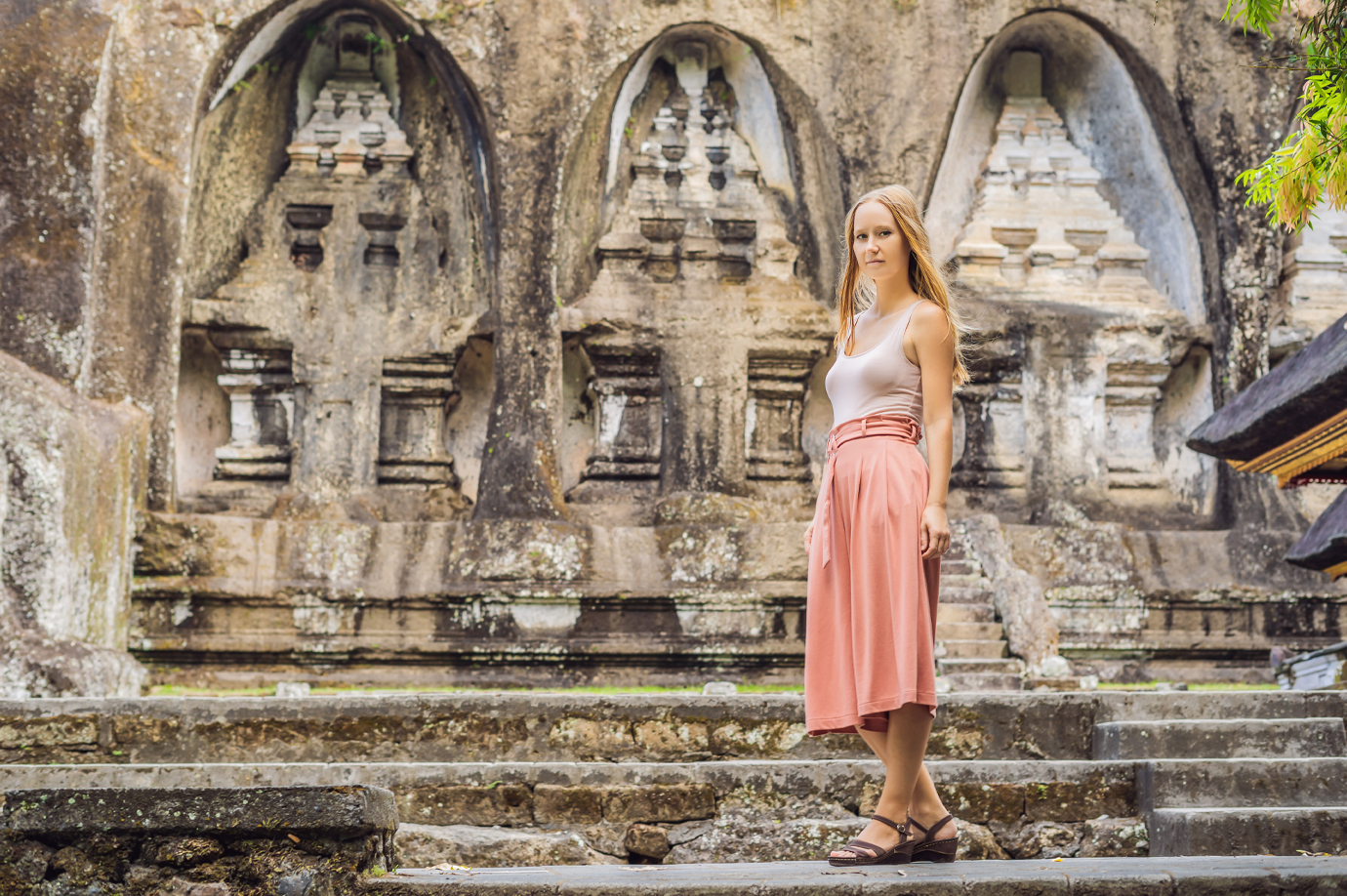
Know Before You Go
Visiting Gunung Kawi Temple is a unique cultural and spiritual experience. To ensure you make the most of your visit and show respect for the temple’s significance, here are a few things to keep in mind:
Dress Code: Modest clothing is required when visiting Gunung Kawi Temple. Ensure your shoulders and knees are covered. Sarongs and sashes are mandatory and can be borrowed or rented at the entrance. These are essential to show respect for the sacred nature of the temple.
Temple Etiquette: As an active place of worship, Gunung Kawi follows specific customs. Avoid standing directly in front of worshippers and never point your feet toward the shrines, as it is considered disrespectful. According to Balinese tradition, women who are menstruating should refrain from entering the temple.
Guided Tours: While you can explore the temple independently, hiring a local guide enhances your experience by providing insights into its history, architecture, and religious significance. Be sure to agree on the tour price before starting.
Best Time to Visit: The best times to visit Gunung Kawi are in the early morning or late afternoon, when the temple is less crowded and the weather is cooler. The temple is open year-round, but visiting during a religious ceremony can provide a unique glimpse into Balinese spiritual practices.
Accessibility: Gunung Kawi Temple is set in a valley and requires descending a number of steps to reach. While the temple is accessible to most visitors, those with mobility issues should be aware of the uneven terrain and stairways. Comfortable footwear is recommended.
Entry Fees: Entrance to Gunung Kawi costs IDR 50,000 per person. Sarongs are provided free of charge at the entrance. There is a small fee for parking, typically around IDR 10,000 for cars and IDR 5,000 for scooters.
Respectful Photography: While photography is allowed in most areas, be mindful not to disrupt worshippers or ceremonies. If you wish to photograph people, especially during religious activities, it’s polite to ask for permission first.
Local Customs: Respecting the local customs enhances your experience. Learning a few phrases in Bahasa Indonesia or Balinese is a thoughtful gesture that will be appreciated by the locals and will enrich your cultural interaction.
By following these tips, your visit to Gunung Kawi Temple will be both respectful and rewarding, allowing you to fully appreciate its cultural and spiritual significance.
Author
This guide to Gunung Kawi, carefully written by the Bali Cheapest Tours & team, reveals the unique blend of historical significance and natural beauty that makes this site a must-visit destination.
Picture yourself walking through Gunung Kawi’s ancient temple complex, surrounded by lush rice terraces, carved stone shrines, and serene natural surroundings. The cultural and spiritual significance of Gunung Kawi offers an unforgettable experience, combining history, architecture, and tranquility.
Planning Your Bali Trip?
Let our expert team create an unforgettable Balinese experience for you. Contact us today to explore our personalized tour packages.
Bali offers magical experiences for every traveler. Don’t wait—start your Bali adventure today and make lasting memories!
